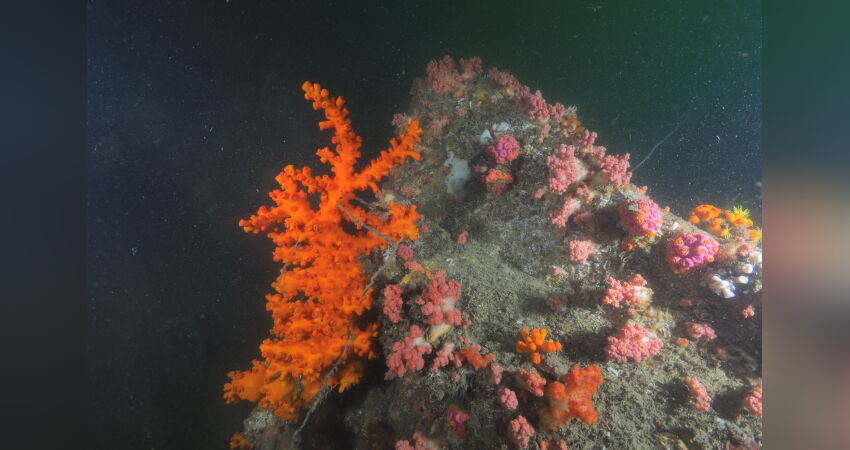Three new Tubastraea corals discovered off Hong Kong

Tubastraea dendroida (c) by Sam King Fung YIU
Biologists at Hong Kong Baptist University (HKBU) have discovered three new species of hard coral in Hong Kong waters that have not been identified anywhere else in the world. They are Tubastraea dendroida, Tubastraea violacea and Tubastraea chloromura. Little by little, we will integrate the new animals into the seawater lexicon.
The new marine species were developed by Professor Qiu Jianwen and MPhil student Mr Yiu King-fung from the Department of Biology at HKBU identified them. The descriptions of the corals have been accepted for publication in the journal. accepted. We are attaching a link.
The three newly discovered sun coral species have been identified by the HKBU team as Tubastraea dendroida, Tubastraea chloromura and Tubastraea violacea, and they all belong all to the genus. Tubastraea . The samples were collected when the team coral-eating nudibranchs near Sung Kong and Waglan Island in the Hong Kong's eastern waters. With the discovery of three new members, the number of known species in the genus Tubastraea increased from seven to ten.
[image:18122]
[image:18121]
[image:18120]
Tubastraea chloromura
. This coral has a delicate olive-green skeletal wall and a circle of yellow tentacles surrounding its mouth. This is why the species was called " Chloromura ", where " Chloro " and " Murus " mean "green" and "wall" respectively. respectively. From coral gene sequences recorded in public databases coral gene sequences recorded in public databases, HKBU biologists see the potential distribution of Tubastraea dendritic. of Tubastraea dendroida and Tubastraea violacea in Japan and the western western Pacific. At this point, however, only the following is known Tubastraea chloromura lives in Hong Kong waters.
All three of these coral species are non-reef-building corals. They do not harbour symbiotic algae that produce nutrients and energy via photosynthesis. to produce nutrients and energy. They live in deeper waters at depths of between 10 and 30 metres and obtain energy and nutrients by using their tentacles to catch zooplankton from seawater.
General information about Tubastraea corals:
Tubastrea and Dendrophyllia, both belong to the family Dendropyhllidae.
To our knowledge, it is very difficult or even impossible to classify these animals precisely.
This would probably only be possible by examining the animal itself (examining the shape and location of the mesenteries).
According to Fossa and Nilsen, all species except Tubastrea micrantha are very similar.
Even in Tubastrea diaphana, green and brown shades have been shown (M. Mrutzek, Daniel Knop).
Tubastraea micrantha differs from the other species by its more vigorous branching. Tubastraea diaphana, unlike the rest of the family has very dark polyps.
For Tubastraea diaphana. there are hardly any reports on keeping them, and in most cases they can only be kept optimal food supply and a current that is not too low. If
Tubastrea corals do not have Zooxanthellae and do not live on light.
They also like a laminar, light current that drives food past them.
As e.g. Daniela Stettler writes under Tubastrea coccinea, you have to feed these animals regularly.
Then the care will also work. If you do not feed the animal, it will not survive.
Various types of food are:
Artemia, Mysis, Lobster eggs, Cyclopeze, plankton, bosmids,
Feeding tip:
It is advisable to use a long feeding pipette for this, with which you can feed the Polypen quite well and above all specifically.
It goes without saying that you also have to feed the fish and shrimps fish and shrimp, otherwise they will try to take the food away from the Tubastreas. the food from the Tubastreas.
No beginner's animals though beautiful!
We sincerely thank the picture author Sam King Fung YIU, Hong Kong. for the photos.
Link: http://zoolstud.sinica.edu.tw/Journals/61/61-45.html
How do you like this article?
Info
Author

Bookmark
Comments
Topics
Similar articles
- mini heater
- New: NP biograin
- New release: The micro heater from Aqua Medic
- ARKA – Wünsch dir was! Die Gewinner stehen fest !
- Press Release: The Essentials+ System from ATI
- .
- Press release: CORAL PINCETTE Professional tool for corals
- Lagerverkauf von SONDERPOSTEN bei Aqua Medic
- Press release: onex® Refugium
- NEW: Maxspect Nano Tech Bio-Sand
Comments To the top
Please register
In order to be able to write something yourself, you must register in advance.






